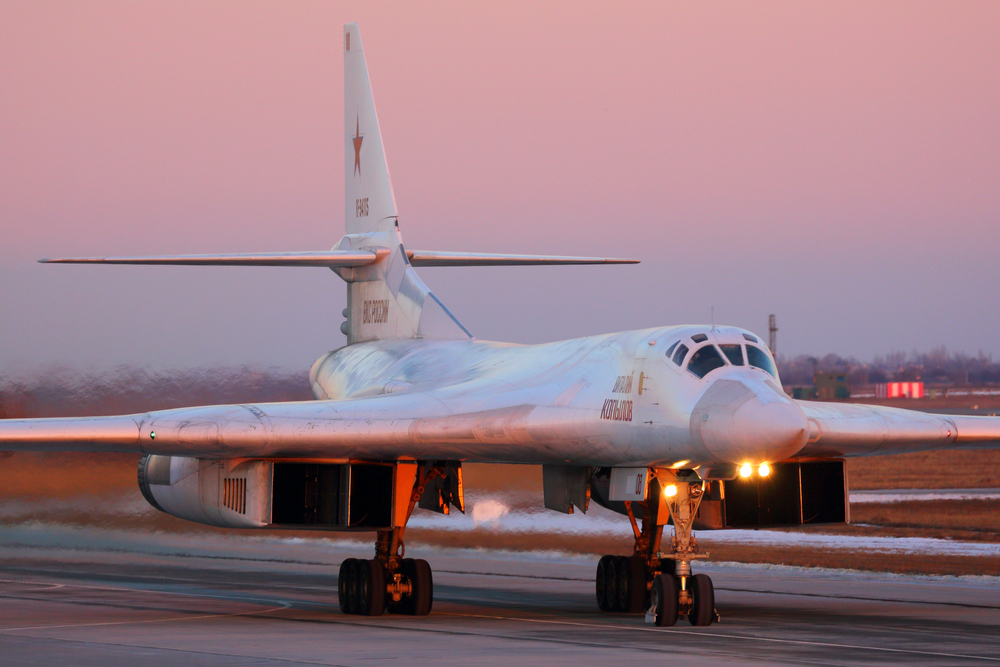Look, buying an airplane without a prebuy inspection is like proposing on a first date. Sure, it might work out, but you’re probably gonna regret it. I’ve seen too many pilots skip this step because they’re excited or the seller seems trustworthy, then end up with a $40,000 engine overhaul six months later.
Quick Answer: A prebuy inspection costs $1,500-$5,000 and takes 1-3 days. A good A&P mechanic checks logbooks first, then inspects airframe, engine, avionics, and systems. They’ll pull inspection panels, borescope cylinders, check for corrosion, test compression, review AD compliance, and look for hidden damage. Always hire YOUR OWN mechanic – never use the seller’s guy. Budget 10-20% of the purchase price for squawks you’ll find. A thorough prebuy saves way more money than it costs by catching problems before you buy.
Why You Actually Need This
Honestly? Because sellers lie. Not all of them, but enough that you can’t take anyone’s word. I watched a buddy buy a “perfect” 182 that turned out to have corrosion in the tail from sitting outside for years. The seller swore it was hangared. $18,000 repair bill.
Here’s the thing – even honest sellers don’t know what’s wrong with their planes. They’re not mechanics. That rattle they’ve been ignoring? Could be a cracked engine mount. The oil consumption that’s “normal”? Might be shot cylinders. A prebuy catches this stuff before it’s your problem.
Plus, prebuys give you negotiating power. Find $10,000 worth of issues? You can walk away or renegotiate the price. After you buy it, those problems are 100% yours. I’ve used prebuy findings to knock $15,000-$25,000 off asking prices multiple times.
Finding the Right Mechanic
Don’t use the seller’s mechanic. Just don’t. I don’t care how good they supposedly are. You need someone working for YOU, not trying to preserve a relationship with the seller. Find an A&P who specializes in your aircraft type – Cessna guys for Cessnas, Piper guys for Pipers.
Ask around at your local airport. Experienced owners know which mechanics are thorough versus which ones just pencil-whip inspections. You want the grumpy perfectionist who finds everything, not the friendly guy who says every plane’s great. Check if they’ve got experience with prebuy inspections specifically – it’s different from regular maintenance.
Some mechanics won’t travel, so you might need to fly the plane to them. That’s fine if it’s already airworthy. For planes that haven’t flown in a while, bring the mechanic to the aircraft. Budget $500-$1,000 for travel time and expenses if needed. It’s worth it.
The Logbook Review
Good mechanics start here before touching the airplane. They’re looking for the plane’s life story. Complete logs from day one? Great. Missing years? Red flag. They’ll check every entry for:
– Annual inspection sign-offs (should be every 12 months)
– 100-hour inspections if it was used for training or rental
– Major repairs and alterations (Form 337s)
– Engine overhauls, cylinder replacements, top overhauls
– Prop strikes or hard landings (even minor ones affect engine airworthiness)
– Airworthiness Directive (AD) compliance
– Service Bulletin compliance (optional but good to see)
– Avionics installations and upgrades
Missing or incomplete logs kill resale value. Some gaps can be fixed with FAA records requests, but it’s a pain. Your mechanic should also calculate time remaining until major inspections or overhauls. Engine at 1,900 hours with 2,000 TBO? You’re buying an overhaul soon.
Airframe Inspection
Now they’ll actually look at the plane. They’ll pull inspection panels (the ones usually left alone between annuals) and really dig in. Here’s what they’re hunting:
Corrosion: The silent killer. Surface corrosion’s not terrible, but structural corrosion in spars, bulkheads, or attach points? Walk away. Common problem areas: tailcone, belly skins, wing root attach points, battery compartment, any area that traps moisture. Coastal planes and those stored outside corrode faster.
Damage history: Previous repairs tell stories. Good repairs with proper documentation? Fine. Sketchy repairs, missing paperwork, or obvious patches? Nope. They’ll look for wrinkled skins, mismatched rivets, paint touch-ups hiding damage. Run a title search through the FAA to check for accident history.
Structural integrity: Cracks in skin, longerons, bulkheads, or engine mount. They’ll look at all the attach points – landing gear, engine, wings, tail. These are high-stress areas. Some cracks can be stopped with stop-drilling, others require major repairs.
Control systems: Cables, pulleys, bellcranks, hinges. Looking for wear, fraying, corrosion, play in the system. They’ll check flight control rigging too. Control surfaces should move through their full range smoothly with no binding.
Engine Inspection
This is where the money lives. Engines are $30,000-$60,000 to overhaul, so pay attention:
Compression test: Best indicator of cylinder health. Results over 70/80 are good, 60-69/80 are okay, below 60/80 means that cylinder needs work. But here’s the thing – compression’s just a snapshot. A cylinder can pass one day and fail the next.
Borescope: Tiny camera goes through spark plug holes to look inside cylinders. Checking for scoring, cracks, valve issues, carbon buildup. This catches problems compression tests miss. Any decent prebuy includes borescoping every cylinder.
Oil analysis: If the seller’s got recent oil analysis reports, great. If not, your mechanic might recommend one. Shows metal content in the oil – iron, chromium, aluminum, copper. High metals indicate internal wear. Trends matter more than single values.
Visual inspection: Looking for oil leaks, fuel leaks, cracked hoses, worn belts, damaged baffling. They’ll check the oil filter or screen for metal. Pull a spark plug from each cylinder to check condition. Inspect exhaust system for cracks or leaks (exhaust leaks can kill you with carbon monoxide).
Time remaining: Calculate hours since major overhaul (SMOH) versus time before overhaul (TBO). An engine at 1,500 SMOH with 2,000 TBO has 500 hours left – maybe 3-5 years for most pilots. Factor this into your offer. Some owners run engines past TBO if they’re healthy (it’s legal on Part 91), but banks won’t finance planes with run-out engines.
Avionics and Electrical
Fire everything up and test it. Every radio, every nav instrument, transponder, GPS, autopilot. Doesn’t work? It’s either a simple fix or a $5,000 replacement. Get it in writing what’s functional versus what’s not.
Check the wiring. Old planes have old wiring. Look for brittle insulation, sketchy splices, amateur installations. Modern avionics in old airframes sometimes means hack jobs behind the panel. Your mechanic should pull the avionics and look.
Test the alternator output, battery condition, and charging system. Electrical problems are annoying and expensive to troubleshoot. Make sure ADS-B Out is compliant and working – it’s required in most airspace now.
Landing Gear and Brakes
Jack the plane up and inspect everything. On fixed gear: struts, wheels, bearings, brake discs, calipers, brake lines. On retractable gear: actuators, motors, hydraulic systems, gear doors, emergency extension system. Retractable gear’s complex – problems get expensive fast.
They’ll swing the gear through several cycles, checking for proper operation, unusual noises, hydraulic leaks. Shimmy dampers, nose wheel steering, tire condition – all gets inspected. Wheels get pulled to check bearings and brake condition.
Flight Controls and Rigging
Control surface hinges, balance weights, trim systems, flap motors/actuators. Everything should move freely with no binding or unusual play. Flight controls get rigged to specific parameters – if they’re out of spec, the plane won’t fly right.
Trim systems are often neglected. Make sure electric trim works properly – it’s expensive to fix. Check rudder trim, if equipped. Control cables get tension-checked with a tensiometer. Too loose or too tight causes problems.
Fuel System
Tanks, lines, pumps, filters, drains. They’ll inspect tanks for leaks, corrosion, proper sealing. Old tanks develop leaks – resealing runs $3,000-$8,000 per tank. Bladder tanks need replacement every 15-25 years – another $8,000-$15,000 job.
Fuel lines get checked for cracks, especially old rubber hoses. Gascolator (fuel filter) gets drained to check for contamination. Fuel selector valve should move smoothly and seal properly – stuck or leaking selectors are common. Test both electric and mechanical fuel pumps.
Test Flight
You’re gonna want to fly it. Take your mechanic along if possible, or at least do it after they’ve looked everything over. Here’s what to check:
Engine performance: Full power on takeoff, smooth operation, proper temperatures and pressures, no unusual vibrations. Check both mags – you should see a small RPM drop (50-150 RPM) when running on each mag alone. Bigger drops or roughness mean ignition problems.
Flight characteristics: Does it fly straight? Does it handle weird? Some planes have quirks, but major control issues indicate rigging problems. Test the stall – should be clean with no weird wing drops. Check the autopilot if it’s got one.
Systems: Try everything. Radios, GPS, transponder, lights, pitot heat, carb heat, alternate air. Pull the power and see how the engine responds. Watch oil pressure and temperature during climbs. Listen for unusual noises.
AD Compliance
Airworthiness Directives are mandatory fixes from the FAA. Your mechanic needs to verify every applicable AD is complied with and properly documented in the logbooks. Missing ADs ground the plane until they’re done. Some are one-time, others are recurring.
Common expensive ADs: Piper wing spar inspections ($15,000+), Cessna seat rail inspections, Beech V-tail inspections. Some ADs make certain models uninsurable or nearly worthless. Do your homework on known AD issues for your target aircraft model.
What It Costs
Basic prebuy with logbook review and visual inspection: $1,500-$2,500. Detailed prebuy with compression test, borescope, and test flight: $3,000-$5,000. Complex aircraft or extensive inspection: $5,000-$8,000+.
Yeah, it’s expensive. But it’s way cheaper than buying problems. I spent $4,000 on a prebuy that found $30,000 worth of issues. Used that to renegotiate the price down by $25,000. That prebuy made me $21,000.
Red Flags to Walk Away
Some things aren’t worth fixing. Walk away if you find:
– Structural corrosion in critical areas
– Cracked spars or major structural damage
– Engine case cracks
– Incomplete or missing logbooks
– Evidence of major unreported accidents
– Multiple cylinders with low compression
– Seller who won’t allow a prebuy or pressures you to skip it
– Plane that’s been sitting for 5+ years without proper preservation
Don’t get emotionally attached before the prebuy. There are other airplanes. The right plane will pass inspection without making you panic about repair costs.
After the Prebuy
You’ll get a written report listing everything found. Prioritize the squawks: safety items first, then airworthiness items, then “nice to have” fixes. Some things need fixing before you fly it home. Others can wait.
Use major findings to renegotiate. The seller can fix the problems, reduce the price, or you walk. Don’t accept “it’s always been like that” or “it’s not a big deal” for serious issues. Get estimates for repairs before you negotiate – helps you know what dollar amounts make sense.
Even good planes have squawks. A clean prebuy might find $5,000-$10,000 in deferred maintenance on an otherwise solid aircraft. That’s normal. It’s the $30,000+ surprise bills you’re trying to avoid.
Finding the Prebuy Money Worth It
Real talk – I’ve never regretted spending money on a thorough prebuy. I’ve definitely regretted skipping them. One time I looked at a plane with “fresh annual” and didn’t do a prebuy because it seemed perfect. First annual I did found $22,000 in deferred maintenance the previous mechanic missed (or ignored).
A prebuy isn’t just about finding problems. It’s about knowing exactly what you’re buying. You’ll get a baseline of your aircraft’s condition. That helps you plan maintenance, budget for upcoming expenses, and understand what’s normal versus what needs watching.
The peace of mind alone is worth it. You’re spending $50,000-$500,000 on an airplane. Spend the extra $3,000-$5,000 to make sure you’re getting what you paid for. Your future self will thank you when you’re not writing surprise checks for engine overhauls or major repairs six months after purchase.



Leave a Reply